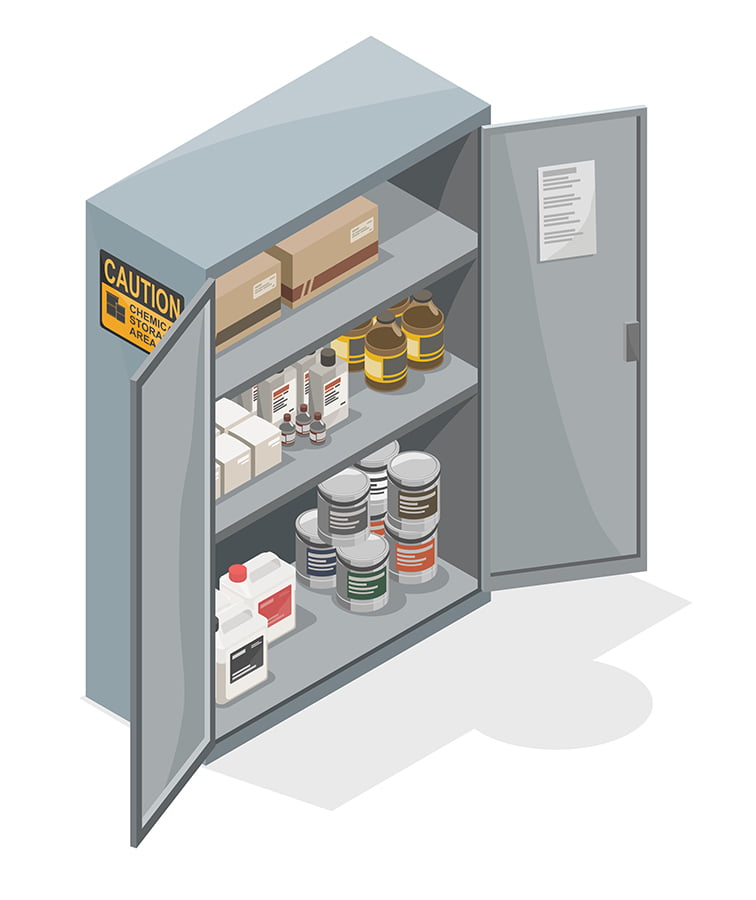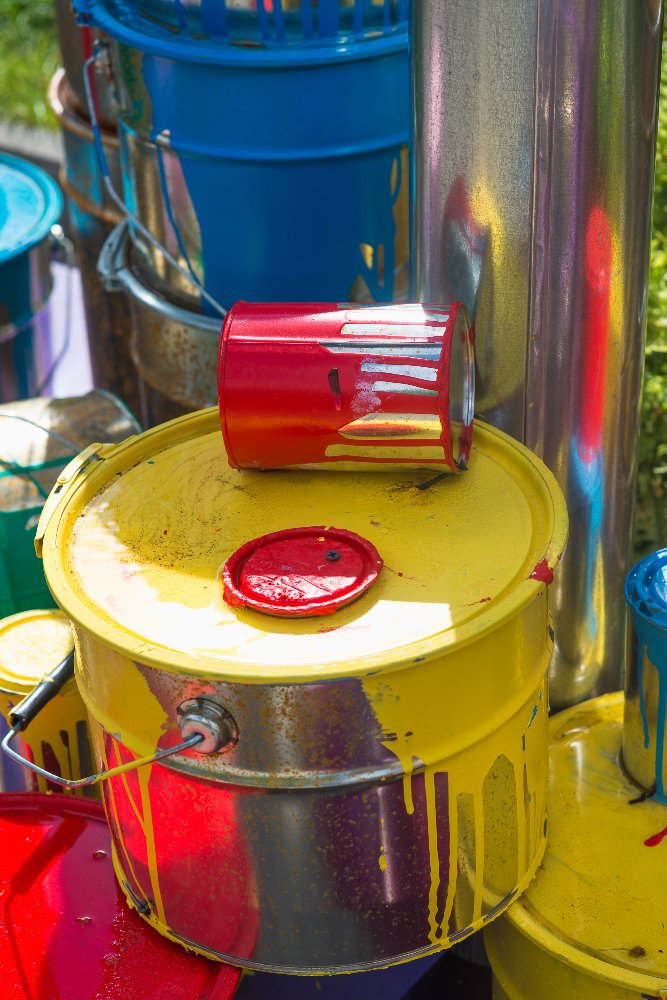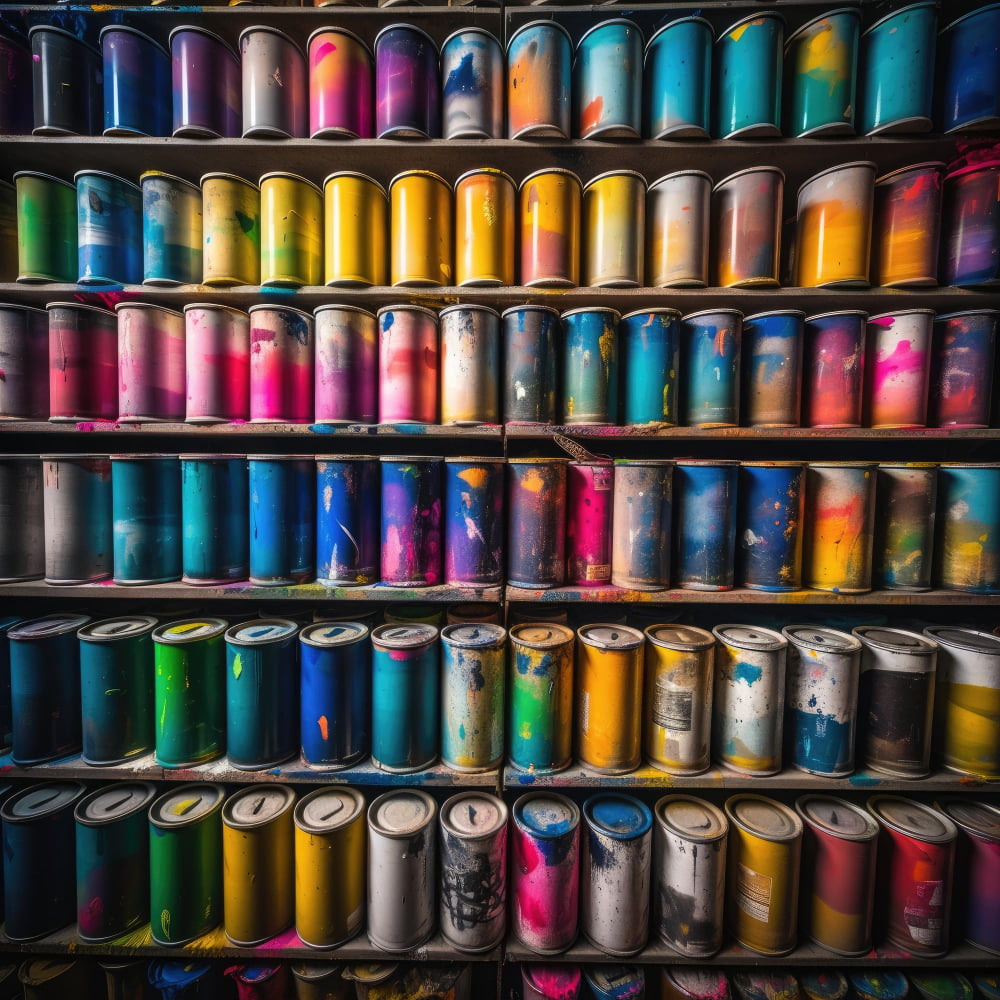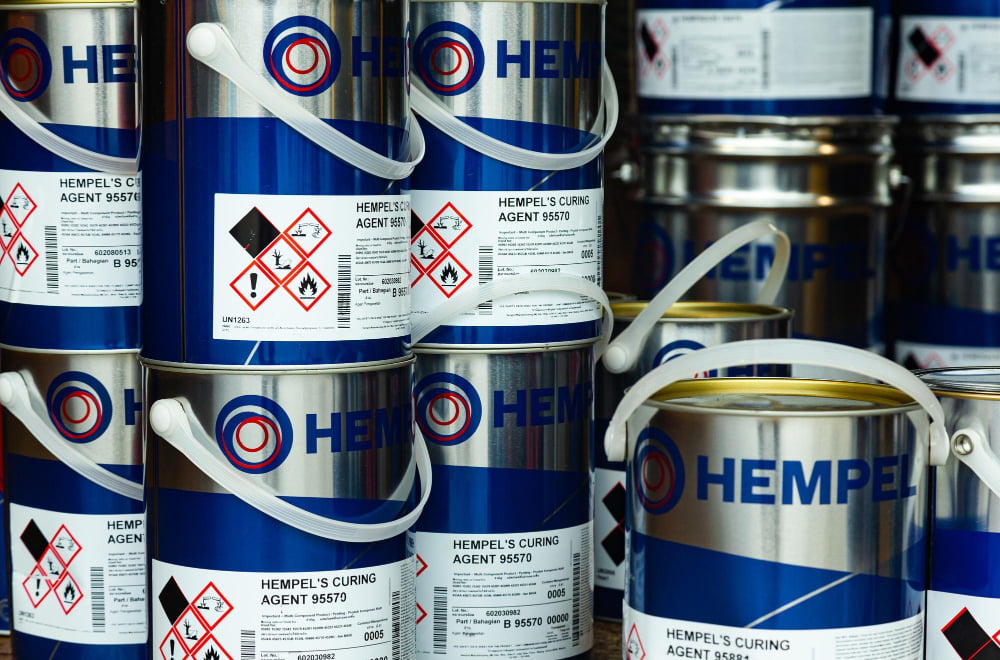While it’s possible to store paint in the garage, extreme temperatures and fluctuating humidity can cause the paint to separate, spoil or dry out, thus it is not advisable.
Storing paint in your garage can be a practical solution, but certain conditions must be met to ensure the paint remains in good condition. Temperature fluctuations, humidity, and the potential for freezing temperatures can all affect the quality of stored paint.
By understanding these factors and implementing proper storage techniques, your garage can be an ideal location for paint storage. This article will guide you through the essential considerations and provide detailed steps to store your paint effectively in your garage.
Key takeaways:
- Extreme temperatures and fluctuating humidity can damage stored paint.
- Temperature, humidity, and sunlight affect the quality of stored paint.
- Proper storage techniques include sealing the lid, elevating cans, and organizing by type and color.
- Dispose of unused paint responsibly through recycling or donation.
- Consider using a flammable cabinet for additional safety when storing paint.
Factors Affecting Paint Storage in the Garage

First and foremost, two key considerations come into play: temperature and humidity. Paint stored in a garage exposed to extreme temperature fluctuations can degrade quickly. The ideal storage temperature for most types of paint ranges from 60 to 80 degrees Fahrenheit. Cold temperatures can cause latex paint to separate, and extremely hot temperatures can dry out oil-based paints.
Similarly, humidity levels can impact your paint’s lifespan. If humidity consistently reaches high levels in your garage, water-based paints can absorb the excess moisture, which ultimately affects their application and drying.
The exposure to sunlight is another factor that can affect paint quality. Direct sunlight can increase the temperature of the paint, potentially altering its color and viscosity. As such, a location away from windows or areas with direct sunlight is suggested.
Last but not least, remember that proximity to flammable substances also poses potential danger. Paint, especially oil-based kinds, can be flammable, hence, should be stored away from any potential sources of sparks or open flames.
How to Store Paint in the Garage Safely

Starting off with the container, it’s crucial to ensure the paint can’s lid is tightly sealed. Any air getting in can ruin the paint. Also, make it a habit to clean the rim of the can before closing to guarantee a secure seal.
Don’t leave paint cans directly on the floor. Moisture seeping from the concrete can damage the can, leading to rust and paint spoilage. Instead, store them off the ground on a shelf or on a piece of wood.
Organizing your paints by type and color not only makes future projects easier but also helps keep track of your inventory. Ensure all labels are front and facing out, so information is easily accessible.
Save space by properly recycling empty or old paint cans. Dispose of unwanted paint in a responsible and eco-friendly way.
Temperatures in the garage can greatly fluctify, affecting the paint’s quality. For optimal longevity, keep your paint in a space that maintains a consistent temperature of 50-80 degrees Fahrenheit.
Lastly, store paint cans in a safe place out of reach of children and pets. An accidental spill or ingestion can entail grave consequences.
These are some essential strategies to safely store paint in your garage and preserve its quality for future use.
Risks Associated With Storing Paint in the Garage

There are notable hazards to be mindful of when keeping paint in your garage. For starters, exposure to extreme heat, cold, or frequent temperature fluctuations can degrade paint quality, rendering it unusable over time.
Furthermore, paint, especially oil-based variants, are considered flammable. Improper storage can increase the risk of fire. This hazard escalates if your garage houses combustible items or if the paint containers are stored near heat sources, electrical outlets, or power tools.
Latex paints, while not flammable, can freeze in cold conditions. The freezing and thawing process alters the paint’s consistency and performance.
Also, storing paint with the lids improperly sealed can lead to the evaporation of key ingredients, changing the color or consistency.
Lastly, old paint cans might rust, causing the containers to leak. Not only does this create a mess, but it can also release potentially harmful fumes into your garage. Adequate ventilation in the garage is key for safety reasons and to prolong the paint’s lifespan.
These points outline why it’s crucial to consider the risks and take the necessary precautions when storing paint in your garage.
Does Paint Have to Be Stored in a Flammable Cabinet?

While storing paint in a flammable cabinet isn’t a strict requirement, it adds an extra level of security and protection, especially in environments with potentially flammable substances close by. Cabinets designed specifically for flammable materials help control potential fires by reducing the exposure to heat.
To further enhance safety, look for cabinets compliant with NFPA (National Fire Protection Association) and OSHA (Occupational Safety and Health Administration) standards. These are built specifically to protect against possible fire hazards and contain a fire within, if it were to occur. This allows people the ability to evacuate and get to safety.
Remember, while paint isn’t highly flammable, paint thinners, some types of paint strippers, and other related solvents can be. Therefore, if you are storing paint alongside these substances, a flammable cabinet is recommended. As safety should always be the highest priority, investing in such a cabinet can be seen as a proactive approach to garage management.
How Temperature and Humidity Can Affect Stored Paint

Significant shifts from cold to hot, as well as excessive humidity, can deeply impact both the quality and longevity of stored paint. Firstly, high temperatures can lead to paint degradation. If the garage temperature exceeds 90°F, paint seal might break, resulting in drying or separation.
Cold temperatures also pose risks. If the temperature falls below 50°F, latex paint may freeze, rendering it useless. For oil-based paints, although more resistant to cold, excessive cold may still lead to thickening or an oily surface.
Humidity only amplifies these issues. High humidity can cause metal paint cans to rust, increasing the chance of the seal breaking and exposing the paint to oxygen, which can in turn lead to drying.
Thus, for stellar paint performance, pay careful attention to temperature and humidity conditions when storing paint in your garage. Consider using a climate-controlled storage space or relying on quality garage insulation to maintain a steady environment. Additionally, store paint cans off the floor—on a shelf or on a pallet—to separate them from damp surfaces.
Proper Disposal of Unused Paint in the Garage

To effectively dispose of unused paint, consider these steps:
1. Solidify: If the paint is latex-based, add equal parts of cat litter to solidify it. For oil-based paints, use a paint hardener. Stir the paint occasionally during the hardening process.
2. Recycle: Local recycling facilities may accept paint. It can be reprocessed into recycled-content paint products.
3. Donate: Donation programs, like Habitat for Humanity ReStores, or local schools and community centers, can often utilize extra paint.
4. Professional Disposal: In some communities, hazardous waste programs will accept unwanted paint for correct disposal.
5. Dry Out: For very small amounts of paint, leaving the can open in a well-ventilated area until it’s dry, then disposing in regular trash, is permitted in many places.
Remember, never pour paint down drains or directly on the ground, as it can harm the environment. Always follow local regulations when disposing of paint.
Preventive Measures for Safe Paint Storage in the Garage

Before storing, ensure paint cans are well-sealed to prevent leakages. A rubber mallet can be used to tightly close the lid, avoiding damage to the can or lid. If the original can is damaged, transfer to a new, clean, and dry can. Write the color, brand, and date of purchase on the new can for future reference.
Finding the ideal location is crucial. Choose a spot that is away from direct sunlight, excessive heat, or freezing temperatures. A cabinet, shelf, or rack that elevates the paint from the ground is a good choice. This prevents contact with water in case of a garage flood. However, make sure it is not near any open flames or heat sources to avoid a fire hazard.
Ensure the storage area is well-ventilated to allow any fumes to dissipate, reducing the risk of harmful vapor accumulation.
Finally, check local regulations about storing flammable materials at home. Some areas may require fireproof cabinets or have a limit on the amount you can keep. This keeps you compliant with any safety laws and rules.
FAQ
How long can paint be stored in garage?
An unopened can of latex or acrylic paint can be stored in a garage for up to 10 years, while a previously opened one maintains its quality for about 5 years if properly sealed and stored.
Where is the best place to store unused paint?
The best place to store unused paint is in a cool, dry location away from sunlight where the temperature remains above freezing, while ensuring to wipe away any excess paint on the outside of the can prior to storage.
Can you leave paint in garage over winter?
No, you should not leave paint in the garage over winter as it can freeze, especially if it’s water-based; it’s better to store it at room temperature.
How do you store paint in an unheated garage?
To store paint in an unheated garage, construct a plywood box, line it with pink rigid insulation on all sides including the floor and lid, and install a regular light bulb in a cheap fixture in the lid.
What precautions should be taken when storing paint cans in the garage?
Store paint cans in a garage by ensuring they are in a cool, dry, well-ventilated area, away from direct sunlight and extreme temperatures, tightly sealed to prevent leaks, and elevated on shelves to avoid potential water damage.
How could temperature fluctuations in the garage affect the quality of stored paint?
Temperature fluctuations in a garage can cause stored paint to separate or gel, potentially compromising its quality and application performance.
What are effective ways to avoid accidental spills or leaks from paint cans in the garage?
To prevent accidental spills or leaks from paint cans in the garage, it is effective to use drip trays under the cans, seal the cans properly after use, and store them on stable shelving away from high traffic areas.